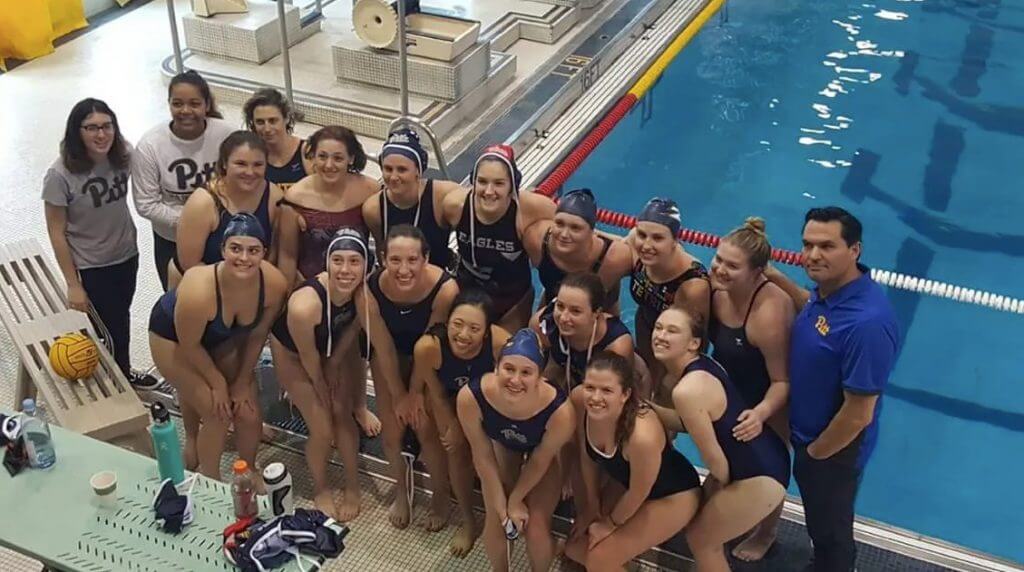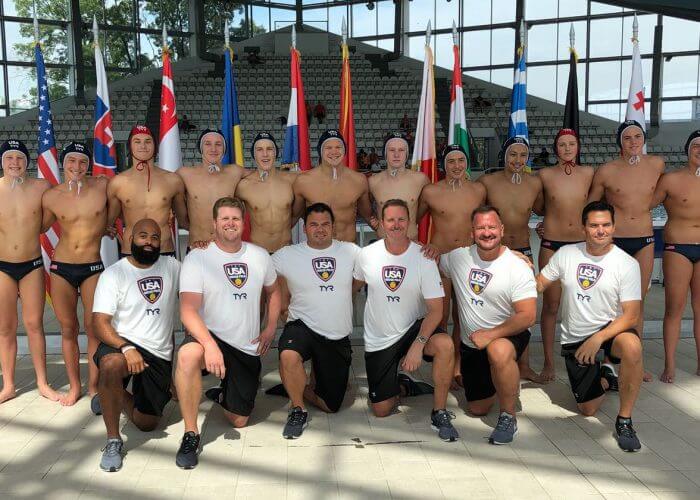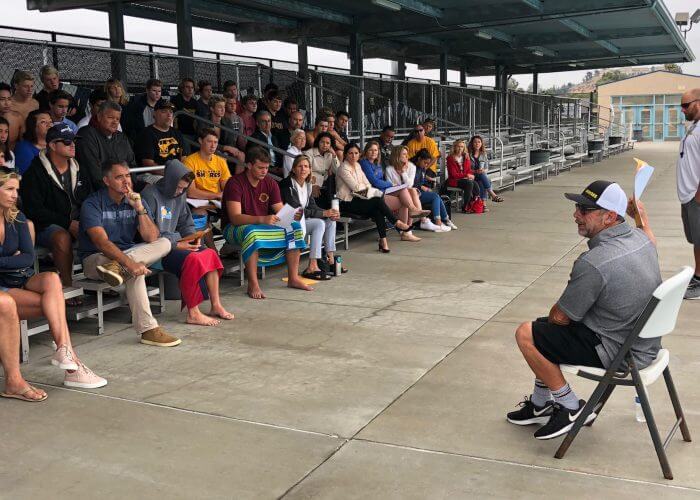On The Record with Jim Staresinic of Pittsburgh Women’s Water Polo Club Team

Age group polo is the lifeblood of the sport in the U.S., making Jim Staresinic’s participation invaluable to the American water polo ecosystem.
A core member of Tiger Water Polo Club, an age group program located in Northwestern Pennsylvania, Staresinic has coached extensively at the local, zone and national levels. But it’s his collaboration over the years with Nikola Malezanov that’s most noteworthy. Both are located in the Pittsburgh area and collaborate on numerous polo endeavors, including an annual water polo combine at the University of Pittsburgh, scheduled for July 1. Their’s is a productive partnership; in 2017 Malezanov —with Staresinic as team manager—led the U.S. Men’s Cadet National Team past Europe’s best programs to capture gold at the Darko Cukic Memorial Tournament in Belgrade, Serbia.
[On the Record with W&J’s Nikola Malezanov]
This past spring he finished his first season coaching the University of Pittsburgh Women’s Club team, which finished second in the 2019 Mid-Atlantic Division Tournament.
Earlier this week Swimming World spoke with Staresinic about his continued involvement with the Cadet boys squad, the challenges of developing age group athletes in the East, and plans for men’s and women’s DIII national collegiate championships starting next fall.

2018 U.S. Men’s Cadet National Team; Staresinic is first row on the far right. Photo Courtesy: USA Water Polo
– How many years have you been working with Coach Malezanov and the U.S. Cadet team?
This is my third year with the Cadets now. My capacity with them is as team manager.
– Two years ago was an undefeated run to the Cukic Cup. How might this year’s team follow up on an accomplishment like that?
The coaching staff always talks about it, lessons learned from that first year where we went out with that group of 2002s. What stood out to us was a learning moment in terms of the leadership we had on that team, and the chemistry. It was a real team. A lot of focus tends to be on how can you build a really good team.
You’re going to have some good talent for sure; it’s just a matter of how you make the team.
– Given the age of the players involved and the competition for Cadet roster spots, how do you encourage prospects to keep improving, even if they don’t make the cut this time?
It’s about always looking forward and reminding players that they’re young—and that there’s lots of runway in their careers.
If they have the dream and an objective, they have plenty of time to achieve that. One missed opportunity is not the end of it for them in any way, shape or form.
– One of USAWP’s goals is to keep athletes progressing to their highest level of play—which for many is intercollegiate play. How does the coaches’ combine that you and Coach Malezanov hold advance this goal?
The whole premise of this starting with creating opportunities for players who typically would not have opportunities to be seen. We recognized too that in a lot of cases that was kids who were in the Eastern and Central part of the U.S.
Nikolai and I have always been fortunate to know enough people in the sport so we do the outreach to both athletes and coaches. We try to bring them together without any promises or setting any grand expectations other than an opportunity to show yourself, meet [representatives from] colleges and universities and find a good fit.
[National Showcases Connect High School Athletes to Collegiate Water Polo Programs]
– How might Eastern athletes, without access to the high level of competition available in California, draw attention from regional college programs?
It’s a great opportunity for the coaches of some of those programs and for the kids. As our event has evolved, we have seen DII and DIII schools grow in numbers for our event, and that they’ve attended more regularly.

An important part of the polo equation: coaches and parents. Photo Courtesy: San Diego Shores
We love that because we know that a lot of the kids who attend our event might be better suited for some of those schools rather than the bigger DI programs, who we certainly want at our event as well.
It’s all about casting as broad of a net as we can for participation at the school or coach level and doing as much outreach as we can to bring in quality, committed athletes to be in front of them.
Then, we hope for really good things to happen.
– An exciting development is recently announced DIII men’s and women’s championships. How will this drive more interest in the sport—and create more opportunity for competition?
My view of that is at any level that you’re playing at—I coached the University of Pittsburgh women’s club team this past season. I’ve had a number of kids play club and you often hear about club and DII and DIII—and people want to shoot for as high as they can go.
[USA Water Polo Division III National Championship Set to Begin in 2019-20]
What I have learned and witnessed is, no matter what level you’re on, if you have an opportunity to build bonds with teammates and play in games against rivals, natural or otherwise, the feeling is all the same. Competing with the Pitt women’s club team—playing in our conference championship—meant as much to those girls as other teams I’ve been affiliated with who have competed for a state championship.
Or, at the collegiate level, same as the DI championship on the men’s and women’s side. Once you bond, once you’re part of something that’s bigger than you, and catch a little bit of that competitive fire, it all means something.
The level that comes after the “D” doesn’t seem to matter. I see the same in club. It’s incredible how energetically competitive it is.
From an athletic standpoint, that’s what it’s all about. You are competing with a group of people that you care about and win for and want to win with.
When they start talking about their aspirations versus what’s realistic, I find myself repeating that more and more to athletes and their parents.




Great article Michael and a wonderful contribution to the sport from Jim, the Pitt women’s team, the Tigers, and our USA youth teams
Thanks
Mike Graff, Pittsburgh Renegades